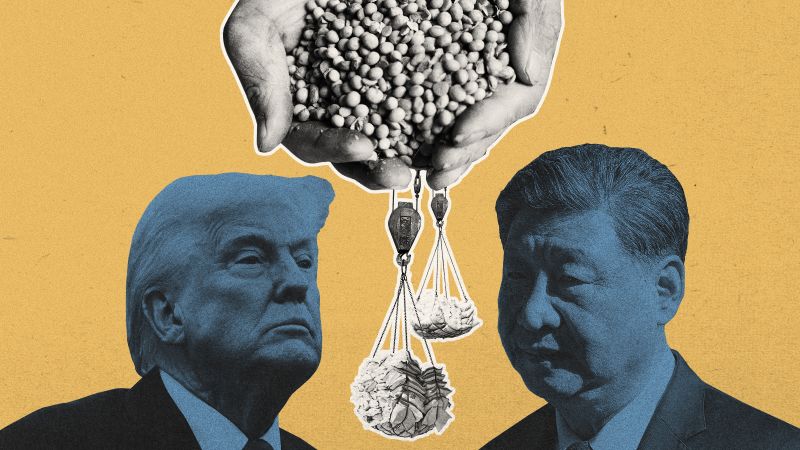
How Trump’s trade war with China will hurt the American farmers who voted him in
CNN
Which nation might blink first in the escalating China-US trade war? CNN examined China’s largest import from the United States – soybeans – to see how that demand could be met elsewhere and what US farmers stand to lose.
US President Donald Trump has imposed an additional 145% tariffs on all Chinese imports despite pausing his “reciprocal” levies on all other countries in a stunning reversal last week. But China is not backing down, saying it will “fight to the end” if Trump continues to escalate what is already becoming a full-blown trade war. On Friday, China also significantly ramped up its own duties on US imports into the country. To analyze which nation might blink first, CNN examined China’s largest imports from the United States — soybeans — to see if and how that demand could be met elsewhere, what US farmers stand to lose and more. Both countries are deeply intertwined with each other on trade, though China sells about three times more to the US than it buys. The result is a significant trade deficit amounting to almost $300 billion in China’s favor, a gap that Trump wants to close with tariffs. China buys mainly agricultural products from the US, including soybeans, oilseeds and grains. Soybean imports, mostly used for animal feed, already took a hit during Trump’s first term when the two countries sparred in an earlier trade war. At the time, China sought to diversify the source of its imports and looked to other countries for agricultural products. It’s set to do that again after imposing 125% tariff on all US imports – a move analysts expect could send China’s imports of American agricultural commodities like soybeans close to zero.

President Donald Trump’s recent attacks on Federal Reserve Chair Jerome Powell caused alarm among some of his top advisers, who warned him that any attempt to remove the head of the central bank could cause as much market turmoil as his ongoing trade war, according to people familiar with the conversations.

 Run 3 Space | Play Space Running Game
Run 3 Space | Play Space Running Game Traffic Jam 3D | Online Racing Game
Traffic Jam 3D | Online Racing Game Duck Hunt | Play Old Classic Game
Duck Hunt | Play Old Classic Game










